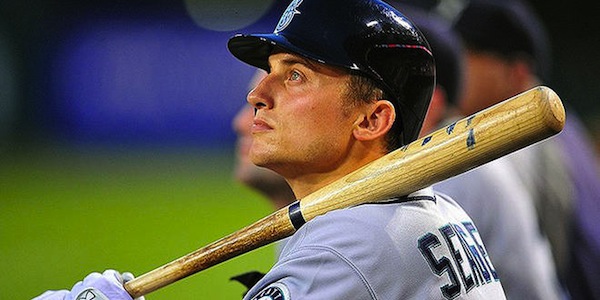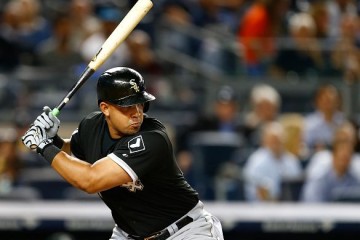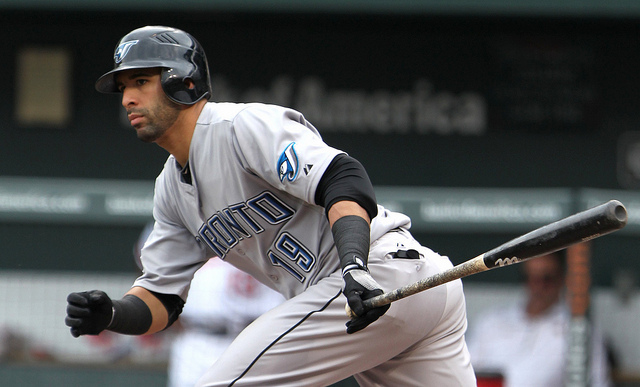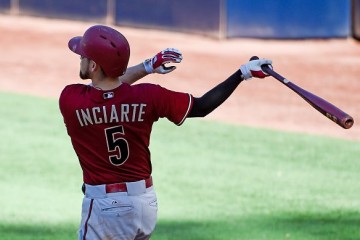2016 Fantasy Baseball: Outfield Risers and Fallers
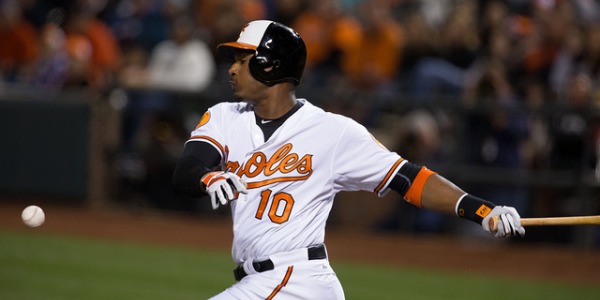
This column will be a prequel to my outfield tiered rankings, which will come out next week. This piece will update you on risers and fallers that may be going somewhat unnoticed through the first half-month of the season.
Risers
Dexter Fowler – Fowler has always been an under-appreciated player because he doesn’t pop off the page or on the field. But he’s always been consistent, averaging 16 steals and 77 runs with a .364 OBP over his first seven seasons. In his last four seasons he’s upped his power in the home-run department from an average of five his first three years to 12.5 the last four. So far this year he has a career-high walk rate at 17 percent (up from 12 percent career) and a career-low strikeout rate (19 percent compared to 22 for his career).
Obviously, these numbers may regress closer to their averages, but Fowler’s career renaissance in Chicago has some merit. On a general basis, Fowler is swinging at 36 percent of pitches, which is by far a career-low. He’s never been below 41 percent. What’s even more outstanding is he’s swinging at only 13 percent of pitches outside the zone, down from from a previous career-best of 19 percent. That number ranks third among all hitters this season, and the two above him (Brett Gardner and Christian Yelich) have isolated power marks of .157 and .172, respectively, far behind Fowler’s .308. So Fowler is giving great plate discipline marks while also crushing the ball, which is something most players can’t do.
Whether you subscribe to lineup protection theory, it looks like something’s going on in Chicago. Fowler’s seeing 47 percent of pitches in the zone, which is the most he’s seen since 2010. He’s also seeing a career-high 61 percent first-pitch strikes, which says that pitchers are trying to get ahead of Fowler since his OBP skills are so good. They don’t want Fowler on base with the Cubs’ big hitters coming up. This bodes well for Fowler. He’s always been patient, but now he’s showing the ability to crush balls in the zone for great outcomes.
Odubel Herrera – Herrera leads all outfielders in walk rate at 22 percent, and he’s picked up where he left off in 2015 – being a power-speed threat. He’s got two homers and four steals already, and even though he’s on a bad Phillies team he’s hitting in the top third of the order every game. Those extra counting stats will come in handy.
Many of his plate discipline numbers fall within a couple of percentage points of league-average marks. His plate discipline numbers aren’t being skewed by batting in front of the pitcher, and his strikeout rate has dropped this year, too, thanks to fewer swinging strikes and swinging at fewer pitchers outside the zone. He won’t maintain a 22 percent walk rate all season, but I think the strikeout rate is sustainable as well as his isolated power mark of .150. That could push him to low double-digits in home runs instead of staying in single digits. His average on balls in play is 30 points lower than last, and he should be able to maintain that to keep his average in the high-.200s.
Fallers
Kevin Pillar – Pillar hit leadoff the first 12 games of Toronto’s season, but since then he’s been seventh, eighth, or ninth. That’s probably because he has a 1 percent walk rate. Yes, you read that right. One percent. There were worries that Pillar wasn’t cut out for the leadoff job, and it seems like they came to fruition. He has one steal this year, and it came Sunday; he’s got no home runs, and his isolated power is at .067 after being above .120 each of the past three seasons. It’s early, and he could go on a little tear soon, but unless he starts stealing bases sometime soon he won’t be worth rostering in many leagues.
Adam Jones – This is bizarro world for anyone who is familiar with Jones’ work so far in his career. He has a career-best 11 percent walk rate this year as well as a career-best 0.50 BB/K rate. But he’s hitting .200 with only one home run and five runs and RBI apiece. His isolated power is a career-worst .114. That might be happening because Jones is only hitting 10 percent of balls in play as line drives, and his fly balls (27 percent) are also at a career-low. His 62 percent ground ball rate is sixth-highest among hitters.
Another troubling aspect of Jones’ early-season struggles is he’s becoming more pull-happy than before. His pull percentage is a career-high 46 percent, and his opposite-field hit rate is a career-low 10 percent, which is well below his career 24 percent mark. Jones is a carer .379 hitter to his pull side with a .291 isolated power mark. But this season he’s hitting just .143 with no extra-base hits to left field.
I searched and couldn’t find anything hinting at Jones playing through an injury, so it might just be an early-season funk. But if his batted-ball rates don’t start normalizing, the soon-to-be 31-year-old may be falling off the cliff a little earlier than we expected.
Statistics cited come from Fangraphs and Baseball Reference


